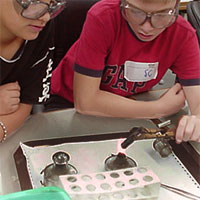As part of developing TIMSS 2003, a special effort was made to include tasks that (1) involve connections between mathematics and science, (2) promote “higher order thinking” and chains of reasoning, and (3) provide opportunities for creative problem solving strategies. With support from the US National Science Foundation, experts from around the world worked to develop such tasks and pilot them. The field test was conducted in over 40 countries in 2002. Many interesting lessons were learned:

- Topics need depth enough for sustained study. They have to be demanding enough to cognitively challenge students, but not so intimidating as to discourage students from attempting to engage in the task.
- The tasks need to strike a delicate balance between maintaining independence of items and providing enough scaffolding to help less able students persevere with the problem or inquiry.
- Some students need practice with shorter single-question tasks that contain more than one step.
- The equipment, if any is required, needs to be manageable and inexpensive.
These tasks provide opportunities for students to use creative problem solving strategies.
Samples of TIMSS 2003 problem solving and inquiry tasks are presented for: fourth grade mathematics, fourth grade science, eighth grade mathematics, and eighth grade science. Some tasks have only one question and others contain a series of questions. Each question is accompanied by a sample of a student response that received full credit and a scoring guide. The scoring guide contains a description of the correct answer. Often, when appropriate, the scoring guide also identifies incorrect answers that signify student misconceptions. The tasks are presented to help teachers and enhance students’ learning in mathematics and science education in elementary and middle schools.










